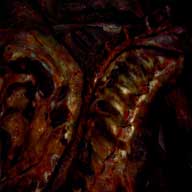





















Nino Migliori
Cloisters of San Pietro
6th May - 12th June 2011 curated by Sandro Parmiggiani |
 Cruor. Elegia della carne, 2008-2011© Nino Migliori
|






















Nino Migliori
Cloisters of San Pietro
6th May - 12th June 2011 curated by Sandro Parmiggiani |
 Cruor. Elegia della carne, 2008-2011© Nino Migliori
|